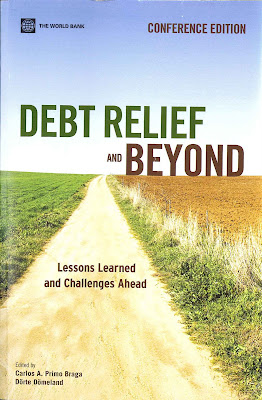 This was the question being asked by World Bank staff and other ‘experts’ on a panel at the Annual Meetings. The event marked the launch of a new Bank book, Debt relief and beyond, which assesses progress under the Heavily Indebted Poor Countries Initiative (HIPC) and the Multilateral Debt Relief Initiative (MDRI) and other challenges on the debt issue, including a section on odious and illegitimate debt. The focus on debt is welcome, especially as the issue is quite marginalised in these meetings otherwise.
This was the question being asked by World Bank staff and other ‘experts’ on a panel at the Annual Meetings. The event marked the launch of a new Bank book, Debt relief and beyond, which assesses progress under the Heavily Indebted Poor Countries Initiative (HIPC) and the Multilateral Debt Relief Initiative (MDRI) and other challenges on the debt issue, including a section on odious and illegitimate debt. The focus on debt is welcome, especially as the issue is quite marginalised in these meetings otherwise.
Countries that have had debt relief have seen increases in social spending, and in some cases indicators such as child mortality have improved. Plus the better debt situation of countries after HIPC and MDRI means they were better able to face the global financial crisis.
However the tone of the discussion looking forward was alarming. Now, a new debt crisis doesn’t seem likely, we were told, although many poor countries are vulnerable, a dozen or more are in severe debt distress, and the outlook is uncertain. Given this prognosis, no real thought seems to have gone into what should be done, beyond imposing the newly-flexibilised Debt Sustainability Framework, and hoping that donors won’t cut back on grant aid. More urgent and radical thinking is needed.
Civil society representatives called for a new debt work-out mechanism to deal with future debt problems, and the Norwegian government minister Solheim spoke of the importance of responsible lending standards, but the Bank's approch seems to be a mixture of wishful thinking and sticking their heads in the sand. In which case it is hard to see how this time things really will be any different.
Monday, October 05, 2009
Debt relief – will this time be different?
Subscribe to:
Post Comments (Atom)


No comments:
Post a Comment